Lonnie Pacelli's Blog, page 39
December 31, 2020
What 16 Years Working from Home Taught Me
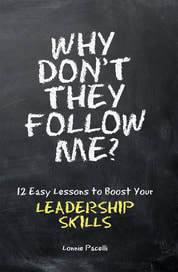 In 2004, my wife Patty and I decided to team homeschool our autistic son because we knew he would need more help as he entered middle school. I had spent 20 years in corporate America, working for both Accenture and Microsoft, but in the Fall of 2004, I became his part-time math and science teacher, spending the remainder of my time doing business consulting and writing books.
In 2004, my wife Patty and I decided to team homeschool our autistic son because we knew he would need more help as he entered middle school. I had spent 20 years in corporate America, working for both Accenture and Microsoft, but in the Fall of 2004, I became his part-time math and science teacher, spending the remainder of my time doing business consulting and writing books.Up to that time I always had either a client or office to go to. With the change to homeschool teacher/author/consultant, I now had no place to go each day. My office was either our playroom where we homeschooled, our home office, or local coffee shops. It was definitely an adjustment and I learned a lot about how to be effective without going to a workplace. Now I can’t imagine it any other way.In 2020, millions of people were quickly forced into working from home. When I started working from home sixteen years earlier, I had the benefit of preparing for my new life—a stark difference from those who suddenly found themselves in work-from-home mode with little warning or preparation. Some aspects of 2020 versus 2004 were easier and others harder, for example, the collaboration tools available in 2020 were simply non-existent in 2004. But the bottom line is the changes were massive and required significant adjustments.
In my 16 years of not having an office I experienced a lot of bumps and bruises to get into an effective work/life rhythm. Key to my learnings was the need to enforce greater self-discipline about:
what I do,how I manage my time,what and when I eat,how much I sleep,when and how I exercise,how I “turn off work,”and how I interact with others.
It’s those bumps and bruises that I want to help others avoid in shifting to a sustainable work-from-home lifestyle, which I have boiled down into five lessons:
Master the online experience – For Pete’s sake, if Zoom, Microsoft Teams, or other online meeting tools are an integral part of your business, take the time to truly understand them and ensure the hardware you’re using creates the most positive experience for others attending your meetings. Not knowing how to do things like share your screen, give others control to share their screen, or use an electronic whiteboard is akin to meeting a business associate face to face at a coffee shop with blaring music and no chairs or tables. When you fumble with the tools you send a clear message to your recipient that he or she isn’t important enough for you to create an outstanding online experience. Just as important, struggling with online meeting tools conveys that you are slow to adapt to changes.Plan to “Done” not “Do” – Each Monday morning I go through my to-do list and decide what I plan to have done by the end of the week. I then plan time in my calendar throughout the week to work on each to-do, then I schedule a Friday 5 p.m. meeting summarizing what I have committed to getting done that week. Key to this is expressing your to-do list in terms of a deliverable, or “done,” not in terms of an activity, or “do.” If you think only in terms of activity, you’re more likely to measure success in terms of how long you spend doing something versus what you actually got done.Put everything in your calendar – In my article "I Can’t Keep Up!" Six Principles for Using Your Calendar to Get More Done , I talk about how to use your calendar not just as a work thing but as a life thing. This is particularly important when you work from home because work start/stop events like commuting to and from work are no longer there. With those barriers gone, it’s much easier to be less respectful of your own time. I’ve had to learn that working from home doesn’t mean I can work anytime; it means I had to be much more disciplined about when I would and wouldn’t work.Set clear expectations with loved ones – Working from home doesn’t necessarily mean you’re always accessible. Having very clear expectations about when you will and won’t be working is crucial to your overall effectiveness. Patty and I send meeting notices to each other for social gatherings or other meetings where one of us won’t be available to the other. This works very well for us to keep us aligned and ensure we don’t overcommit ourselves.Make physical and mental health a priority – While there are great conveniences in working from home, it also means you have to be more diligent about tending to your physical and mental health. I never stay in pajamas during the day, I schedule exercise time in my calendar, I eat meals away from my workstation, stick to a regular sleep schedule, and *try to* be disciplined about between-meal snacking. I also weigh myself regularly. This really helps if you want to maintain or lower your weight and if you tend to wear stretchy clothes that don’t remind you if you’ve added an inch to your waistline.
For many, working from home may be a long-term if not permanent reality. Consider these five lessons to help you design a sustainable and satisfying work-from-home lifestyle.
Lonnie Pacelli
Keynote Speaker | Board Director | Autism Advocate | Author | Project Management Expert | Microsoft/Accenture Veteran
See his books on Amazon.
Published on December 31, 2020 02:34
December 25, 2020
Free 12/30-31: Can You Make a 2AM Meeting?
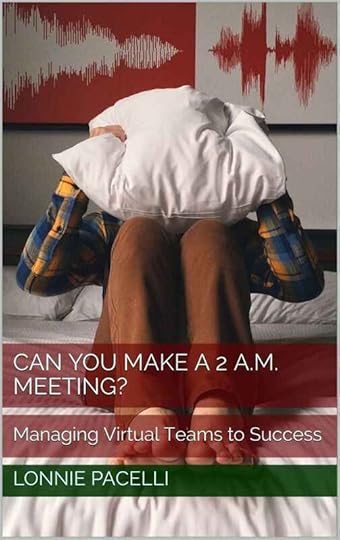 Free 12/30-31: Can You Make a 2AM Meeting?
Free 12/30-31: Can You Make a 2AM Meeting?Get it at https://amzn.to/2S2DQMZ
#freebook #leadership #kindle #kindlefire #ebooks #ebook #Kindlefreebooks #Kindledeals #FREE #mustread #goodreads #greatreads #freebie #freebies #kindlebook #ad #teamwork
Published on December 25, 2020 02:40
Make Better Life Decisions Using the Nine Crucial Elements to Achieve Good-Enough Contentment
 In
Behind Gold Doors-Nine Crucial Elements to Achieve Good-Enough Contentment
I discuss how to achieve what I term "good-enough" contentment in your life. The book is a story about Ty, who seemed to have it all, then one day it all changed. At the end of his rope, Ty had a chance encounter with a quirky old woman who brought him on a journey to discover the nine crucial elements of good-enough contentment and helped him put a plan in place to fill his contentment gaps. His outlook on life changed forever as a result of him thinking through each of the contentment areas, re-aligning his expectations to think in terms of good-enough, and creating a prioritized plan to work towards good-enough contentment. If you haven't read the book yet I recommend you pick it up :-).
In
Behind Gold Doors-Nine Crucial Elements to Achieve Good-Enough Contentment
I discuss how to achieve what I term "good-enough" contentment in your life. The book is a story about Ty, who seemed to have it all, then one day it all changed. At the end of his rope, Ty had a chance encounter with a quirky old woman who brought him on a journey to discover the nine crucial elements of good-enough contentment and helped him put a plan in place to fill his contentment gaps. His outlook on life changed forever as a result of him thinking through each of the contentment areas, re-aligning his expectations to think in terms of good-enough, and creating a prioritized plan to work towards good-enough contentment. If you haven't read the book yet I recommend you pick it up :-).As a parallel to the book, I developed an excel spreadsheet to help you define good-enough goals and work towards those goals. The Nine Crucial Elements to Achieve Good-Enough Contentment Assessment includes a decision-making grid to help you evaluate two decision alternatives using the nine good-enough elements. By looking at a big decision, i.e. taking a new job versus staying at a current job, using the nine good-enough elements, you will be able to more holistically evaluate your alternatives and make a better decision. You can download the spreadsheet which you should use after reading the book.
Back to my decision to leave Microsoft. I used the decision-making grid to confirm to myself whet
I'd love to hear about your journey; email me at contentment@behindgolddoors.com.
Published on December 25, 2020 02:40
December 20, 2020
Just released! Behind Gold Doors - Nine Crucial Elements to Achieve Good-Enough Contentment
Struggling to find contentment? These nine crucial elements can help you focus on the most important things to be more content in life.
Ty seemed to have it all. Great job, beautiful family, house with a white picket fence. Then one day it all changed. At the end of his rope, Ty had a chance encounter with a quirky old woman who brought him on a journey to discover the nine crucial elements of lifelong contentment and helped him put a plan in place to fill his contentment gaps. His outlook on life changed forever. Can it do the same for you?
Get the Nine Crucial Elements to Achieve Good-Enough Contentment Assessment to help you get on the path to lifelong contentment!
Behind Gold Doors-Nine Crucial Elements to Achieve Good-Enough Contentment is great for New Leaders | Seasoned Leaders | Nurse Administrators | Project Managers | Program Managers |Pastors | New Supervisors | New Managers | Healthcare Administrators | Sales Managers | Life Coaches
Read a Sample | Get it on Amazon
Ty seemed to have it all. Great job, beautiful family, house with a white picket fence. Then one day it all changed. At the end of his rope, Ty had a chance encounter with a quirky old woman who brought him on a journey to discover the nine crucial elements of lifelong contentment and helped him put a plan in place to fill his contentment gaps. His outlook on life changed forever. Can it do the same for you?
Get the Nine Crucial Elements to Achieve Good-Enough Contentment Assessment to help you get on the path to lifelong contentment!
Behind Gold Doors-Nine Crucial Elements to Achieve Good-Enough Contentment is great for New Leaders | Seasoned Leaders | Nurse Administrators | Project Managers | Program Managers |Pastors | New Supervisors | New Managers | Healthcare Administrators | Sales Managers | Life Coaches
Read a Sample | Get it on Amazon
Published on December 20, 2020 05:49
December 18, 2020
Free 12/23-24: Be a Killer Sponsor
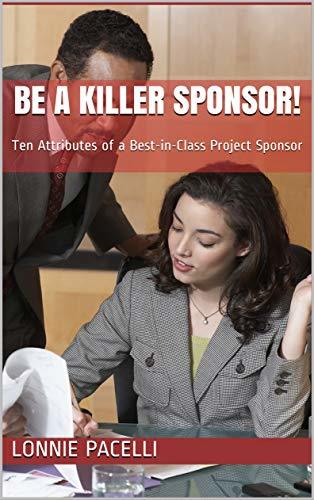 Free 12/23-24: Be a Killer Sponsor
Free 12/23-24: Be a Killer SponsorGet it at https://amzn.to/2OTin7f
#freebook #leadership #kindle #kindlefire #ebooks #ebook #Kindlefreebooks #Kindledeals #FREE #mustread #goodreads #greatreads #freebie #freebies #kindlebook #ad #teamwork #projectmanagement
Published on December 18, 2020 02:34
December 17, 2020
Annual Goal Setting Using the Nine Crucial Elements to Achieve Good-Enough Contentment
 In my book Behind Gold Doors-Nine Crucial Elements to Achieve Good-Enough Contentment I discuss how to achieve what I term "good-enough" contentment in your life. The book is a story about Ty, who seemed to have it all, then one day it all changed. At the end of his rope, Ty had a chance encounter with a quirky old woman who brought him on a journey to discover the nine crucial elements of good-enough contentment and helped him put a plan in place to fill his contentment gaps. His outlook on life changed forever as a result of him thinking through each of the contentment areas, re-aligning his expectations to think in terms of good-enough, and creating a prioritized plan to work towards good-enough contentment. If you haven't read the book yet I recommend you pick it up :-).
In my book Behind Gold Doors-Nine Crucial Elements to Achieve Good-Enough Contentment I discuss how to achieve what I term "good-enough" contentment in your life. The book is a story about Ty, who seemed to have it all, then one day it all changed. At the end of his rope, Ty had a chance encounter with a quirky old woman who brought him on a journey to discover the nine crucial elements of good-enough contentment and helped him put a plan in place to fill his contentment gaps. His outlook on life changed forever as a result of him thinking through each of the contentment areas, re-aligning his expectations to think in terms of good-enough, and creating a prioritized plan to work towards good-enough contentment. If you haven't read the book yet I recommend you pick it up :-).As a parallel to the book, I developed an excel spreadsheet to help you define good-enough goals and work towards those goals. The Nine Crucial Elements to Achieve Good-Enough Contentment Assessment includes an annual goal setting tab to help you identify what you'd like to achieve by the end of the year for each good-enough contentment element and put steps in place to do it. You can download the spreadsheet which you should use after reading the book.As you embark on your goal setting journey remember to keep a few things in mind:Be realistic about what you commit to doEvaluate your progress on a regular basisBe persistentDon't be afraid to change your goals if something in your life changes.
Lastly, while this can be an effective tool to help you develop good goals, at the end of the day it's only a tool. You've got to take action and be disciplined to achieve the goals you set out to do.
I'd love to hear about your journey; email me at contentment@behindgolddoors.com.
Here's to a contented and happy new year!
Published on December 17, 2020 02:45
December 12, 2020
Free 12/16-17: Back Yourself with the Best
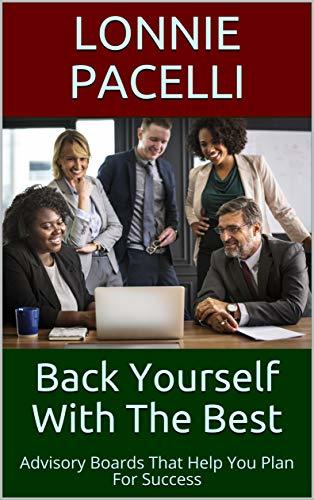 Free 12/16-17: Back Yourself with the Best
Free 12/16-17: Back Yourself with the BestGet it on https://amzn.to/2TrAIf5
#freebook #leadership #kindle #kindlefire #ebooks #ebook #Kindlefreebooks #Kindledeals #FREE #mustread #goodreads #greatreads #freebie #freebies #kindlebook #ad #teamwork
Published on December 12, 2020 02:57
December 4, 2020
Free 12/9-10: 31 Tips to be a Best-in-Class Project Sponsor
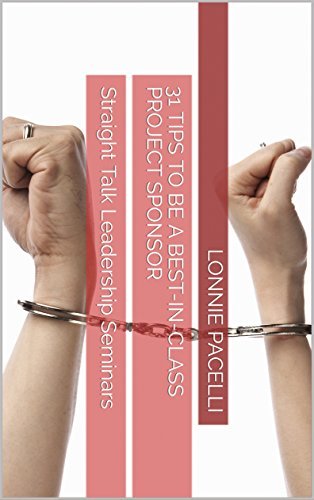 Free 12/9-10: 31 Tips to be a Best-in-Class Project Sponsor
Free 12/9-10: 31 Tips to be a Best-in-Class Project SponsorGet it at https://amzn.to/2DMYdux
#freebook #leadership #kindle #kindlefire #ebooks #ebook #Kindlefreebooks #Kindledeals #FREE #mustread #goodreads #greatreads #freebie #freebies #kindlebook #ad #entrepreneur #projectmanagement
Published on December 04, 2020 02:47
November 28, 2020
Free 12/2-3: 30 Tips to a More Fulfilling Dinner Time with your Family
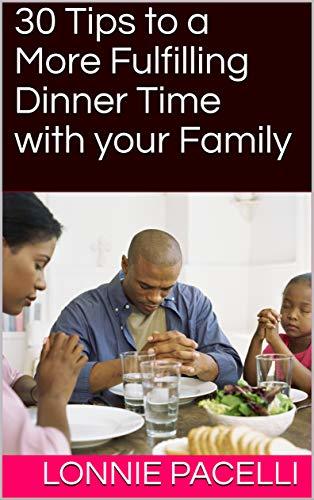 Free 12/2-3: 30 Tips to a More Fulfilling Dinner Time with your Family
Free 12/2-3: 30 Tips to a More Fulfilling Dinner Time with your FamilyGet it at https://amzn.to/2DMdXhr
#freebook #worklifebalance #leadership #kindle #kindlefire #ebooks #ebook #Kindlefreebooks #Kindledeals #FREE #mustread #goodreads #greatreads #freebie #freebies #kindlebook #ad
Published on November 28, 2020 02:50
November 24, 2020
“You Did WHAT?!?” Using Decision Guard Rails to Align Decision-Making Expectations
 Bill was a newly appointed project manager over a mission-critical systems development initiative. Ann, Bill’s boss, trusted Bill to lead the initiative and gave him the latitude he needed to execute without getting in his way. While the two worked well together, they did struggle in one area: decision-making. They had several instances where Ann was surprised by key decisions Bill made but didn’t inform Ann. Bill also didn’t benefit from Ann’s experience on several issues and made uninformed decisions that hurt the project. Ann asked Bill to include her more on decisions, but Bill took that as him needing to come to her on decisions he could have made on his own. Bill grew frustrated with his perception of Ann micromanaging him, whereas Ann just wanted to ensure she was in the loop on key decisions. The project ultimately got done, but not without a lot of friction between the two.
Bill was a newly appointed project manager over a mission-critical systems development initiative. Ann, Bill’s boss, trusted Bill to lead the initiative and gave him the latitude he needed to execute without getting in his way. While the two worked well together, they did struggle in one area: decision-making. They had several instances where Ann was surprised by key decisions Bill made but didn’t inform Ann. Bill also didn’t benefit from Ann’s experience on several issues and made uninformed decisions that hurt the project. Ann asked Bill to include her more on decisions, but Bill took that as him needing to come to her on decisions he could have made on his own. Bill grew frustrated with his perception of Ann micromanaging him, whereas Ann just wanted to ensure she was in the loop on key decisions. The project ultimately got done, but not without a lot of friction between the two.Friction that could have been avoided.
Key to a leader who empowers followers is the ability for the follower to make decisions without always having to ask the leader for permission. When done well, the follower is able to execute more nimbly and with greater ownership. When done not so well (as the case above), both the leader and follower are likely to be frustrated by missteps, poor communication, and potentially damaging decisions that were made without enough information. I’ve learned through doing this wrong so many times that there are four degrees of decision-making where the leader and follower agree as to the amount of guidance and input provided in decision-making. The degrees, or what I like to refer as guard rails, are as follows:Get Approval – The follower presents the decision with supporting rationale to the leader. The follower asks the leader to decide. Leader is the decider; follower is the informer. Example: A follower must ask permission to hire an employee.Seek Advice – The follower presents the decision with supporting rationale to the leader. The follower asks the leader for advice. Follower is the decider; leader is the advisor. Example: A follower must seek advice before promoting an employee.Inform only – The follower presents only the resulting decision (minus supporting rationale) to the leader. The follower informs the leader. Follower is the decider; leader is the receiver. Example: A follower should inform the leader when taking a day off work.Don’t inform – The follower makes and executes the decision without escalating to the leader. Follower is the decider; leader is not informed. Example: A follower acts without informing the leader when taking time off during a workday for a personal appointment.
By creating four distinct decision-making categories, it acknowledges not just the extremes (get approval and don’t inform), but also acknowledges there are some decisions where a leader should provide input into a follower’s decision (seek advice) as well as those decisions where the leader should be kept in loop on the decision (inform only). By slotting types of decisions into these four categories, both the leader and follower are better aligned on the decisions being made and the degree of involvement the leader should have in the decision.
In defining decisions under each guard rail, it’s important to keep a couple of things top of mind:Don’t try to define every possible decision the follower can make. Focus on those decisions that are material in nature and help to set a theme for the types of decisions the follower addresses in his/her normal course of workGreat empowering leaders don’t apply a one-size-fits-all decision-making approach to followers. Factors such as follower experience level and degree of subject matter expertise influence the guard rail category for different types of decisions. As example, a follower newly promoted to a leadership role may have some decisions that fall into the seek advice category where a more experienced follower would have those same decisions in the inform only category.
To successfully implement guard rails, leaders need to do the following:Categorize typical decisions into guard rails for his/her job – To set an example for followers, the leader should go through his/her decisions and slot them into the guard rail categories. By doing so it not only establishes an example that followers can use, but also highlights potential decision-making conflicts a leader might have with his/her boss.Empower the follower to define the guard-rail decisions – A great step to establish trust with a follower is to ask the follower to define the types of decisions that fall in each of the four guard rail categories. The leader then works with the follower on adjustments until agreement is achieved.Adjust guard rails with capability changes - Revisit the guard rail decisions in each category periodically to make adjustments as the follower’s experience level and subject matter expertise level changes.
Take the time up front to get clarity on decision-making expectations using guard rails. It will help reduce friction between the leader and follower and promote a more healthy empowering relationship.
Published on November 24, 2020 15:08



